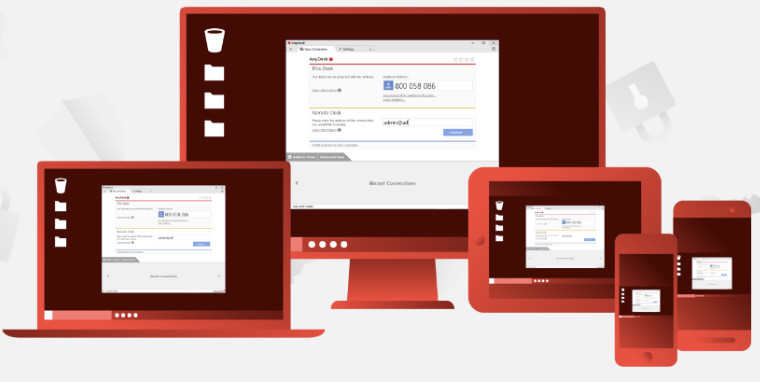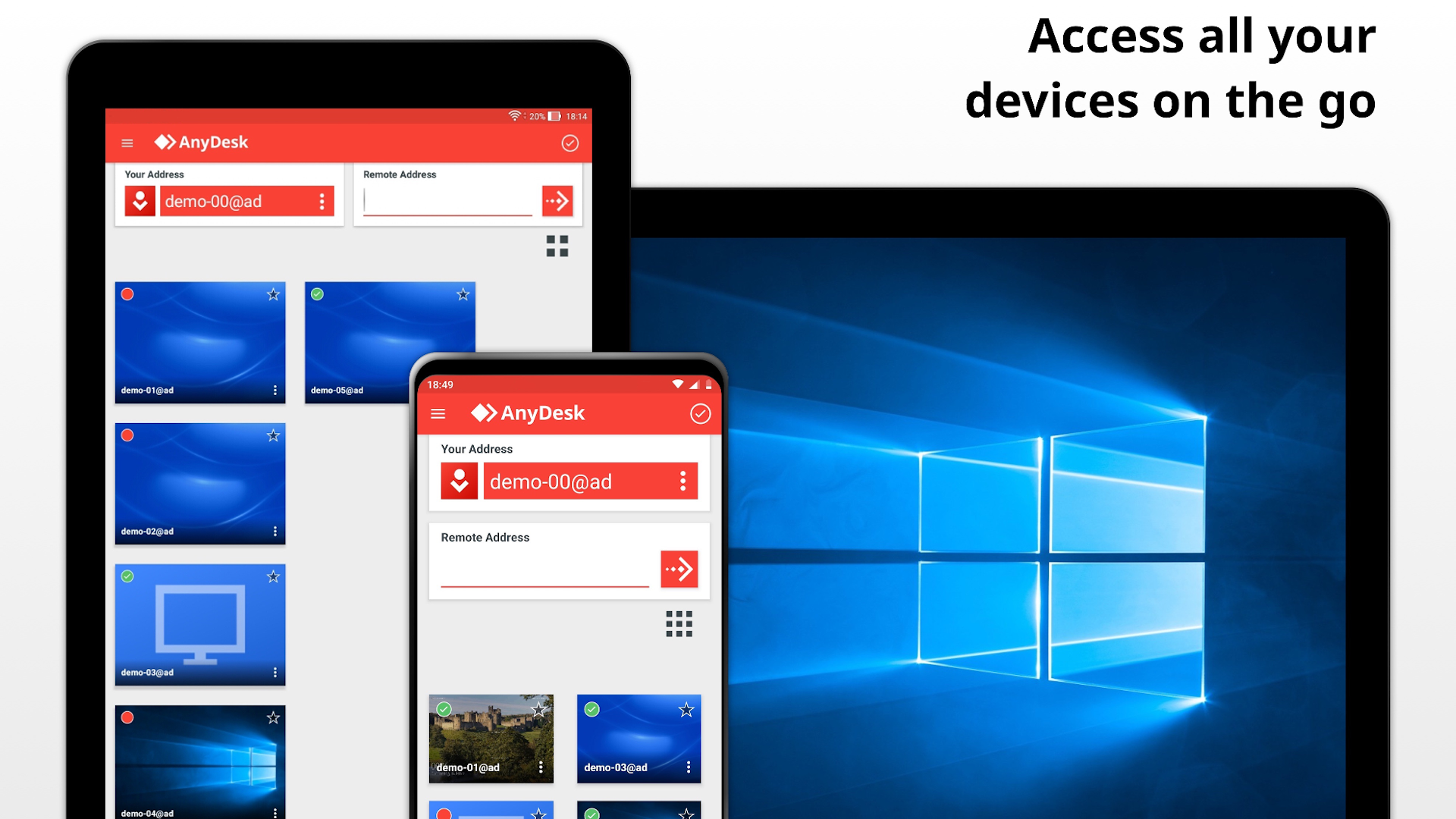Below is the comparison of the starting price and payment method of AnyDesk and Splashtop. You can purchase AnyDesk with Per Month payment plan. Information related to the payment plans of Splashtop is unavailable. Both AnyDesk and Splashtop provide free trials for. The AnyDesk Audio Feature transmits sound from the remote device to the local device. It can be enabled or disabled in the 'Permissions'-section of the Accept Window before or during an AnyDesk session, as well as in the 'Permissions'-settings at the top of the AnyDesk window during a session.
Lately, we’ve told you a lot about new updates to our software, what happens behind the scenes and who can profit from remote desktop software like AnyDesk. But have you ever wondered what is at the core of AnyDesk’s application? Why do you even need remote access and what is AnyDesk about? When it comes to remote support, you’ll see that there really is no alternative to a quality remote desktop solution.

At its core, remote access means connecting one computer to the other and viewing and interacting with the remote device’s screen. There are many use cases for remote access ranging from simple screen sharing to professional IT support, as well as a plethora of solutions. Let’s explore what makes AnyDesk the right tool for the job.
High-Quality Performance
Performance is what elevates the best remote desktop software above the rest. To be able to see another device’s screen – whether it’s from the next room or the other side of the world – means an image needs to be sent to you first. Having to wait for that image having a significant delay – defeats the entire purpose of screen sharing.
That’s why AnyDesk transmits 60 frames per second. This works via a video codec called DeskRT that’s designed for fast data transmission even at low bandwidths. When connecting to a friend’s computer, you can then simultaneously follow their activity on the remote screen. For example, if they want to show you their home videos or show you how a tool works, you will see what they see in real time. Sure, you could use a screen sharing tool, but here is why AnyDesk is a great alternative:
A remote desktop tool can also function as a remote control. People can use a smartphone, view the screen of a big machine, and control it.
Anydesk Hide Top Bar
Lightweight Tools
Anydesk Topeka
Companies often use remote desktop software to provide remote support to their employees. Being able to connect to any device in the world is an excellent alternative to in-person IT support. Support staff don’t need to be physically present to assist their co-workers, which saves significant time and energy. Therefore, the software needs to be light and simple to use. If someone has an urgent support request, they shouldn’t have to download and install a large application with a complicated installation process. AnyDesk, for example, is a 3MB file that doesn’t need to be installed.
Versatile Use Cases

Remote support isn’t the only reason companies use remote access software. Sometimes the IT department has to roll out new software on all devices. Other times co-workers want to work on documents together. Some employees work from home and connect to their work PC or use a tablet to work on a high-performance computer. Good remote desktop software should be suited for these different use cases and work on all platforms. With AnyDesk, you can connect from an Android smartphone to a MacBook, from Linux to Windows and more.
Top-Level Security
Finally, remote desktop software must be secure. In fact, security needs to be a priority. At AnyDesk, we take security very seriously. First, we wrapped our software in multiple layers of security, including banking-standard TLS-technology. Then, we developed our software to include a significant number of security settings and permissions that allow the user to customize the software to meet their security needs. Lastly, we make an effort to inform our users about how they can stay safe.
And that’s how remote access software comes together! As you see, for many cases, there is no better alternative but to use a light and fast remote desktop application. Want to know more about AnyDesk? Take a look at these unusualuse cases.
Any Desktop Download
AnyDesk is a Remote Desktop solution which has become very popular in the last two years. It is overtaking TeamViewer in popularity because AnyDesk is currently a lot more generous with how much activity they allow on the free version. However, it is not always desirable to have remote access software such as AnyDesk running on your network. This article explains a number of measures to block AnyDesk from connecting out to the big wide world.

Ports used by AnyDesk
Like most hosted remote-access applications these days, AnyDesk connects out on ports TCP 80, TCP 443, and also one unique port – TCP 6568.
Anydesk Top
Internally, it uses UDP ports 50001-50003 for multicasting to allow discovery on your local network.
No special outbound rules or port forwarding are required to make AnyDesk work – so long as your network administrator hasn’t followed the below instructions to make life difficult for AnyDesk.
How to Block AnyDesk On Your Network
Anydesk Topic
If you want to block AnyDesk on your network, there are a few measures you can put in place:
Anydesk For Desktop

- Create local firewall rules using Windows Firewall to block outgoing connections from AnyDesk.exe
- Block the resolution of DNS records on the anydesk.com domain. If you run your own DNS server (such as an Active Directory server) then this is easy:
- Open your DNS Management Console
- Create a top-level record for ‘anydesk.com‘
- Do nothing else. By pointing this record nowhere you will stop connections to this domain and all of it’s subdomains
- Block anydesk.com in PiHole – this is another way to use DNS blocking to stop AnyDesk from connecting out via your network
- Ensure the only DNS connections allowed on your network are to your own internal DNS servers (which contain the above dummy-record). This removes the possibility of the AnyDesk client checking DNS records against their own servers, instead of yours. To do so, add a new outgoing firewall rule to disallow TCP & UDP port 53 from all source IP addresses, EXCEPT the addresses of your own DNS servers.
- You can utilise Group Policy to deny AnyDesk.exe from running. To do this, create a new Software Restriction Policy with a Hash Rule for AnyDesk.exe.
- If you have a firewall with Deep Packet Exception, you can enable the in-built rules to block AnyDesk. These firewalls often release new definition updates as the situation changes, so a lot of the hard work is handled for you.
- Block outgoing TCP Port 6568. You can create a DENY rule in your firewall to do this.
AnyDesk does not have any fixed IP addresses – they simply use IPs from cloud providers, and do not publish a list, so blocking IPs will be a game of whack-a-mole. However, these above seven steps should allow you to be successful in blocking AnyDesk from connecting out to the internet.
